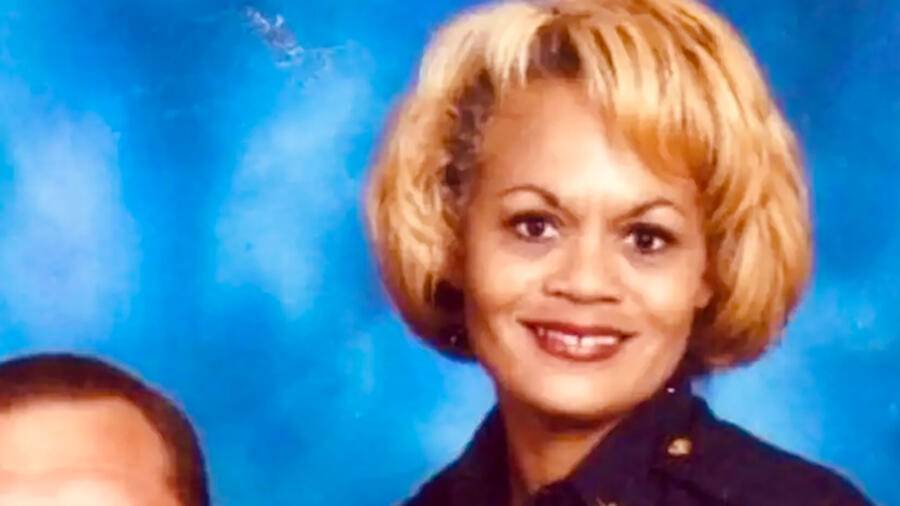The Rookie Cop Who Saw What Others Missed
In a chilling twist of fate, a rookie cop just two months into her job helped break one of Dallas’s most terrifying serial murder cases. Regina Smith, once a wide-eyed newcomer, soon faced the dark world of Charles Albright—infamously known as the Eyeball Killer.
While other officers overlooked the whispers and signs, Smith connected the dots that ultimately led to the killer’s arrest. Her instincts, compassion, and street sense put her at the heart of a case that continues to shock even decades later.
When the Nightmare Began
In December 1990, police discovered the lifeless body of Mary Pratt in a remote part of South Dallas. Someone had shot her in the head and dumped her body like a discarded object. Yet what truly horrified the detectives was far worse—both of her eyes were missing.
Forensic experts didn’t see signs of a sloppy or hasty crime. Instead, they found clear evidence that someone had removed the eyeballs with surgical precision. In fact, the procedure was so clean that it resembled the work of a trained medical professional or someone who had studied anatomy in detail.
Smith’s Unexpected Role
At the time, Regina Smith had only recently joined the Dallas Police Department. Still new to the streets, she patrolled neighborhoods most officers preferred to avoid. That included Oak Cliff, a struggling area with high crime rates and a vulnerable population of sex workers.
However, what Smith lacked in experience, she made up for in empathy. She treated the women on the streets with respect and dignity. As a result, many of them opened up to her. They trusted her. That trust proved essential.
Unlike seasoned detectives who often dismissed tips from sex workers, Smith listened. In many cases, those women saw and heard more than any official surveillance ever could.
The Second Victim and Rising Fear
Just two months later, in February 1991, someone murdered Susan Peterson under eerily similar circumstances. Police found her body dumped, with gunshot wounds—and once again, the eyeballs were surgically removed.
This time, the media seized the story. As reports spread, residents grew more terrified. The killer now had a name: The Eyeball Killer. The public couldn’t wrap their minds around the horror of the crimes. Many feared that no woman, especially those working on the streets, was safe.
Behind the scenes, Regina Smith continued her conversations. The women she spoke with described an older man, well-dressed but strange. He showed an unsettling interest in their eyes. He liked to talk about knives and anatomy. And he always seemed to appear when no one else was watching.
Getting Closer to the Truth
Each day, Smith gathered more fragments. She brought these insights to her partner and compiled detailed notes. Over time, they began to see a pattern. One name kept surfacing in hushed tones: Charles Albright.
Albright didn’t look like a killer. A former teacher and taxidermist, he had a seemingly clean life and even volunteered in the community. But behind that mask of normalcy lay a twisted obsession—one that involved taxidermy, dissection, and yes, eyes.
The Third Victim Changes Everything
In March 1991, tragedy struck again. Someone murdered Shirley Williams in a way that mirrored the earlier killings. However, this time something was different. The killer had performed the eye removal sloppily. The clean surgical touch was gone. Bruising around the sockets suggested he’d been rushed—or that his tools had failed.
Regina Smith saw this as a sign that the killer was losing control. As a result, she pressed even harder to convince her superiors to investigate Albright.
Eventually, police found a witness who changed everything: a sex worker who had narrowly escaped an attack. She had sprayed mace in her attacker’s eyes and described him in vivid detail. That man matched Charles Albright.
The Arrest and the Chilling Gaze
Armed with mounting evidence, police finally arrested Albright. Regina Smith stood in the room when they brought him in. She later recalled the moment with a shiver: “I looked into his eyes and saw pure evil.”
During a search of Albright’s home, investigators made disturbing discoveries. They found scalpels, anatomy books, and taxidermy tools. Even more haunting were jars filled with preserved animals—frogs, lizards, snakes—but never the missing human eyeballs.
Despite their efforts, police never found the eyes of Mary Pratt, Susan Peterson, or Shirley Williams.
Only One Conviction, Endless Questions
In 1994, prosecutors brought Albright to trial. They could only charge him with the murder of Shirley Williams. Although they suspected him in the other killings, the evidence remained circumstantial. No DNA, no witnesses—just deeply unsettling patterns.
Still, the jury found him guilty. He received a life sentence without parole. Yet Regina Smith and others knew in their hearts: this man had done far more.

